Textiles
Cretan Textiles
Large Woven Fabrics
Large woven fabrics with geometrical patterns include various types of woollen bedspread (kilimia, patanies, hiramia), decorative wall-hangings (pantes), coverings for the back and seat of the sofa (makathia), bagalia, used as both sofa covers and swaddling clothes, and sintzandedes (saddle-cloths).
All these were woven on the loom with fine decoration, either covering the whole surface or limited to the ends.
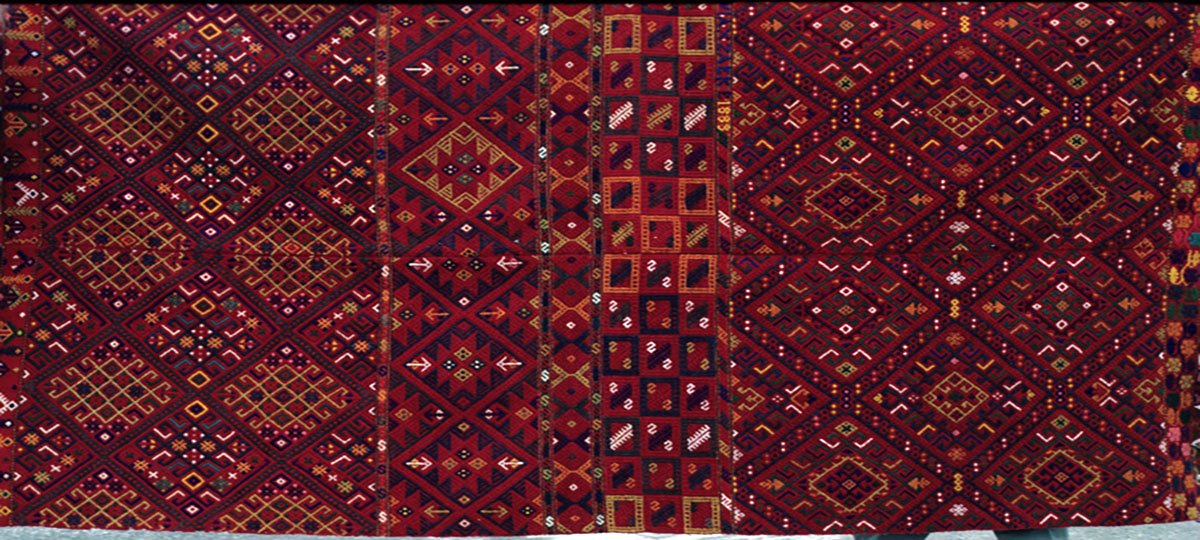
Kilimi, Kenourio 1888
There is always meticulous geometrical order, arrangement and “deference” to the design principles of symmetry, arrangement in horizontal bands, rhythm and lack of empty space between the motifs.
The motifs on large woven fabrics are impressively varied, in spite of the fact that the great majority are based on the diamond shape. There are, however, exceptions such as the koubes, reminiscent of a church cupola, or the motifs of certain very characteristic woven fabrics from Chania Prefecture.
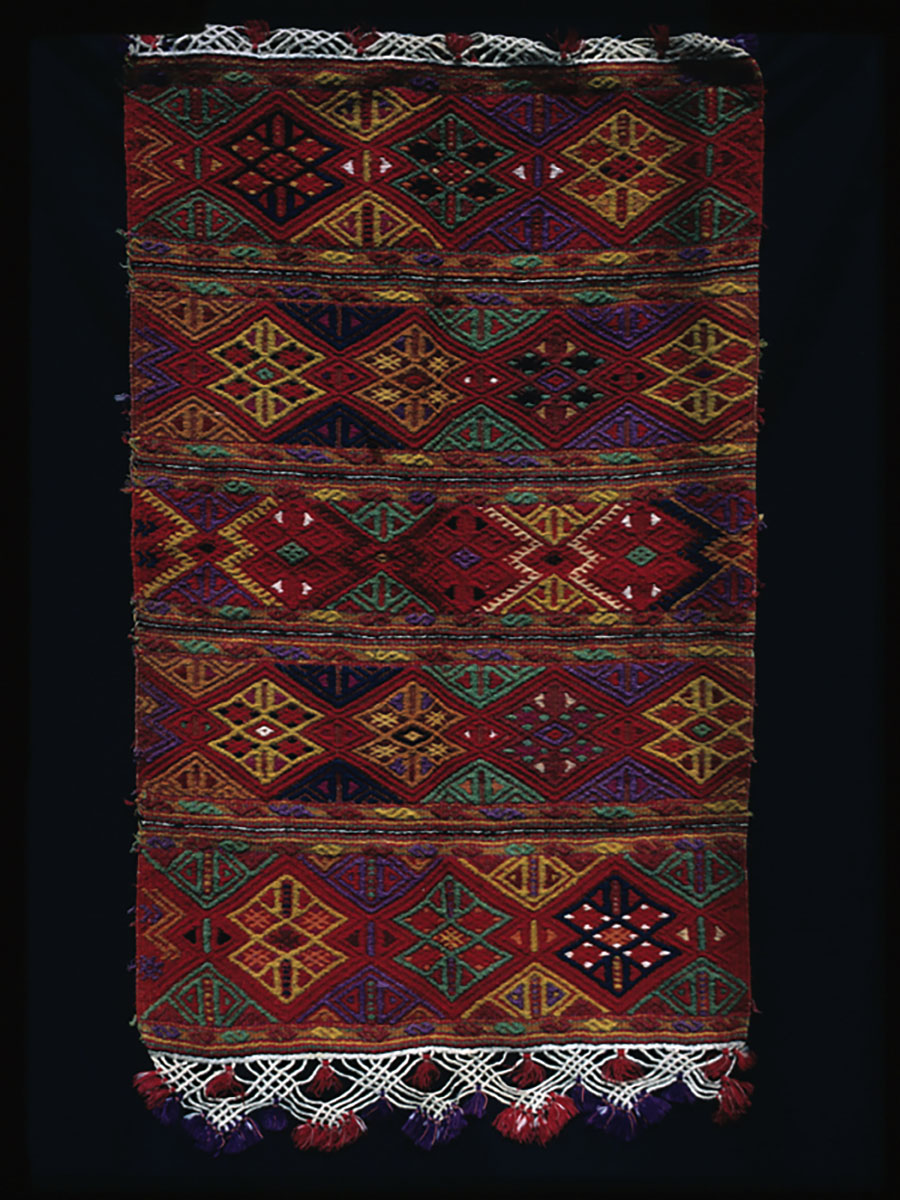
Panta, Merambello 1885
Soyioma (Filled) Woven Fabrics
In this type of weave the whole surface is covered with decoration, without paying particular attention to the ends or the centre.
Soyioma fabrics have a common surface pattern, with a characteristic alternation of decorative bands with geometrical motifs.
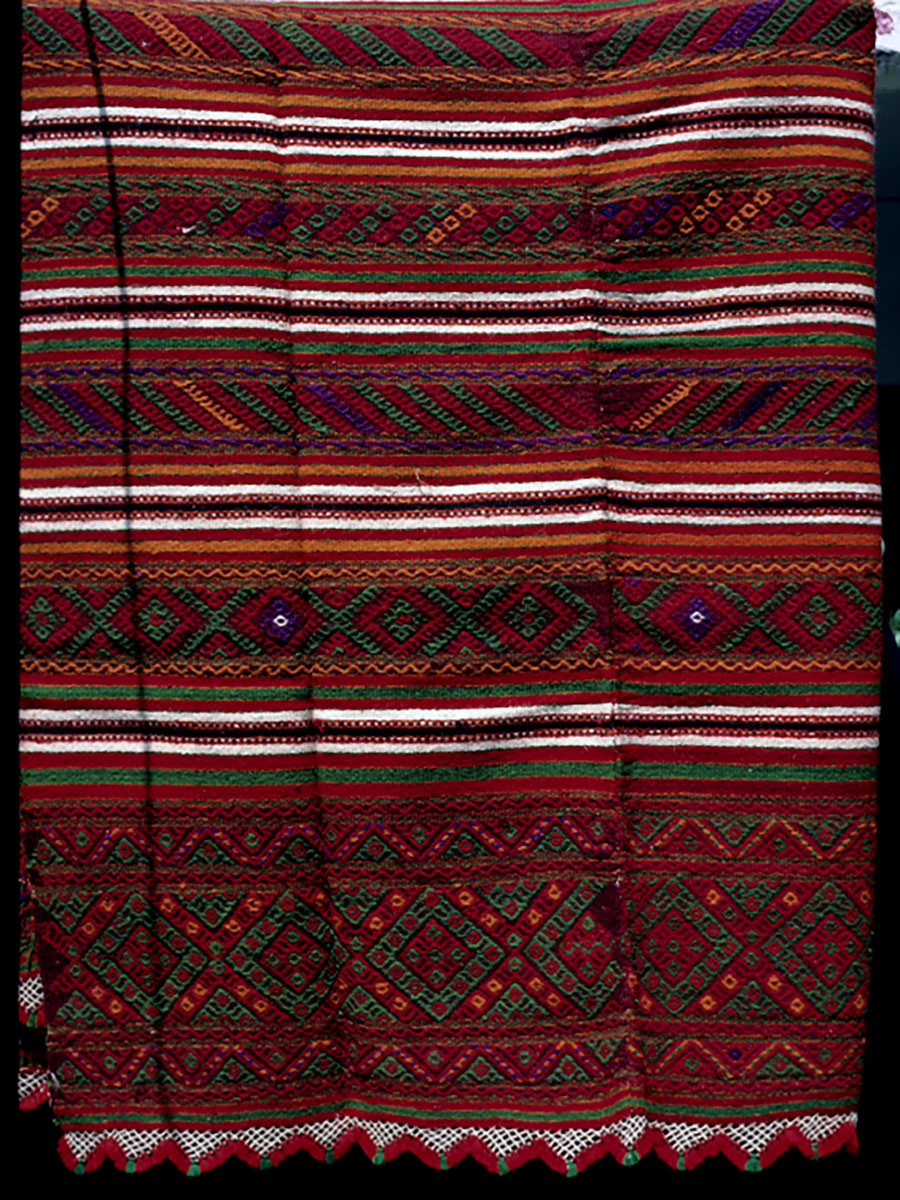
Kilimi, Lassithi 1860
However, the originality of each woven fabric is impressive, as the weaver chooses the motifs and colours she uses and the way they are arranged on the surface of the weave.
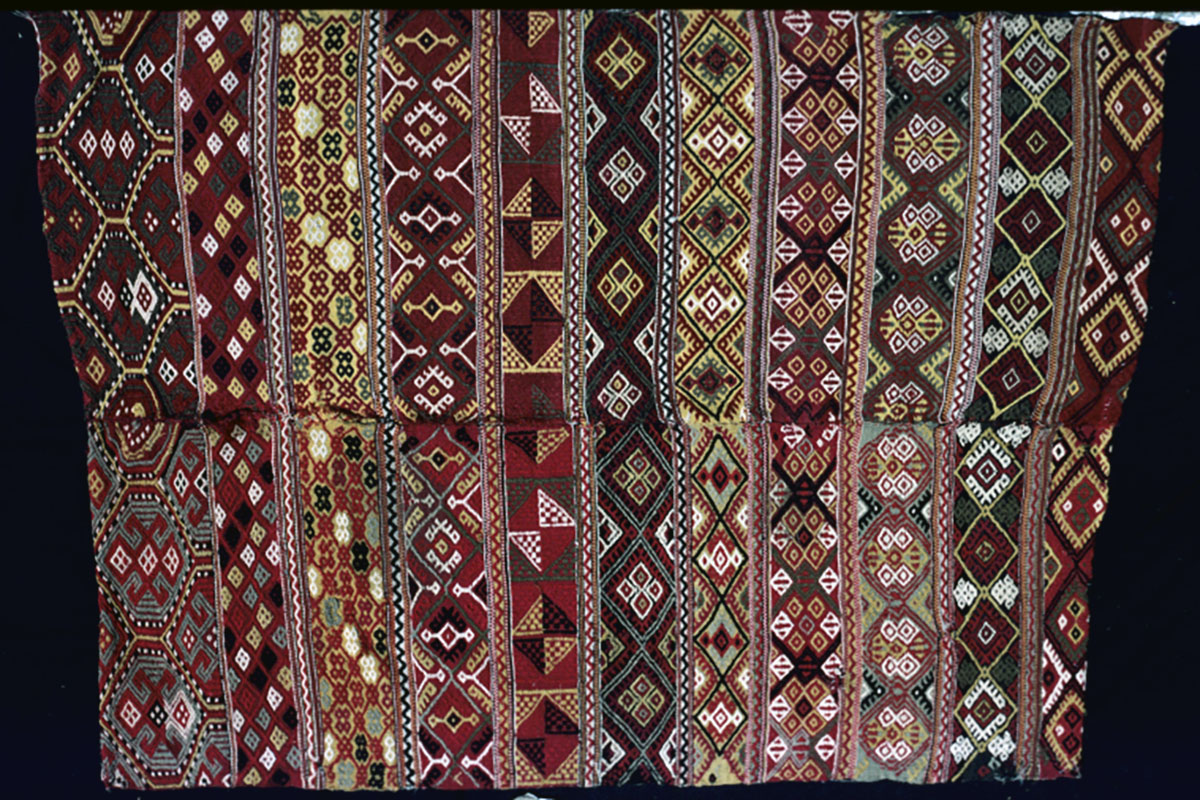
Kilimi, Amari 1870
Soyioma fabrics are usually those whose use means that the whole surface is displayed, such as kilimia (kilims), pantes (wall-hangings), bagalia and makathia (sofa covers).
Soyioma fabrics are usually found in Eastern and Central Crete, but not in Chania Prefecture.
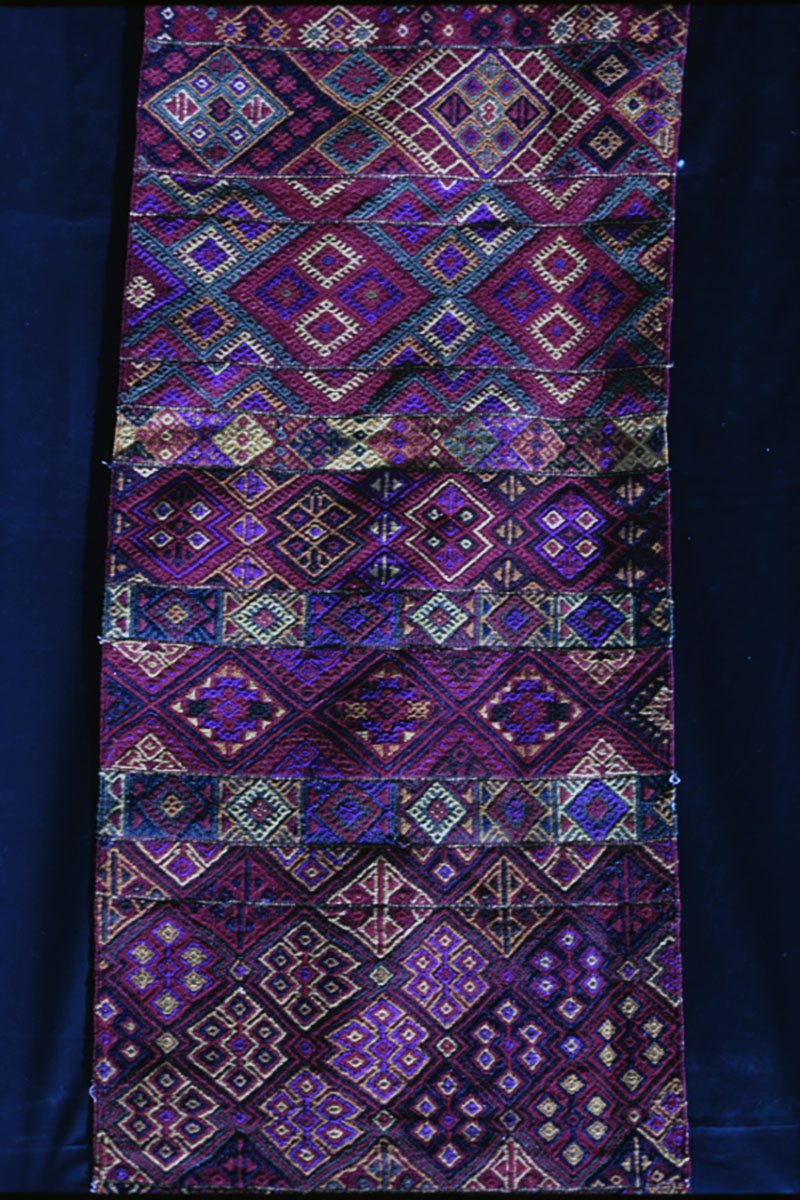
Woven Fabrics With Geometrical And Linear Designs
This type of woven fabric may be considered a sub-category of soyioma, as the whole surface is decorated. In this case, however, the decoration is not the same across the whole surface.
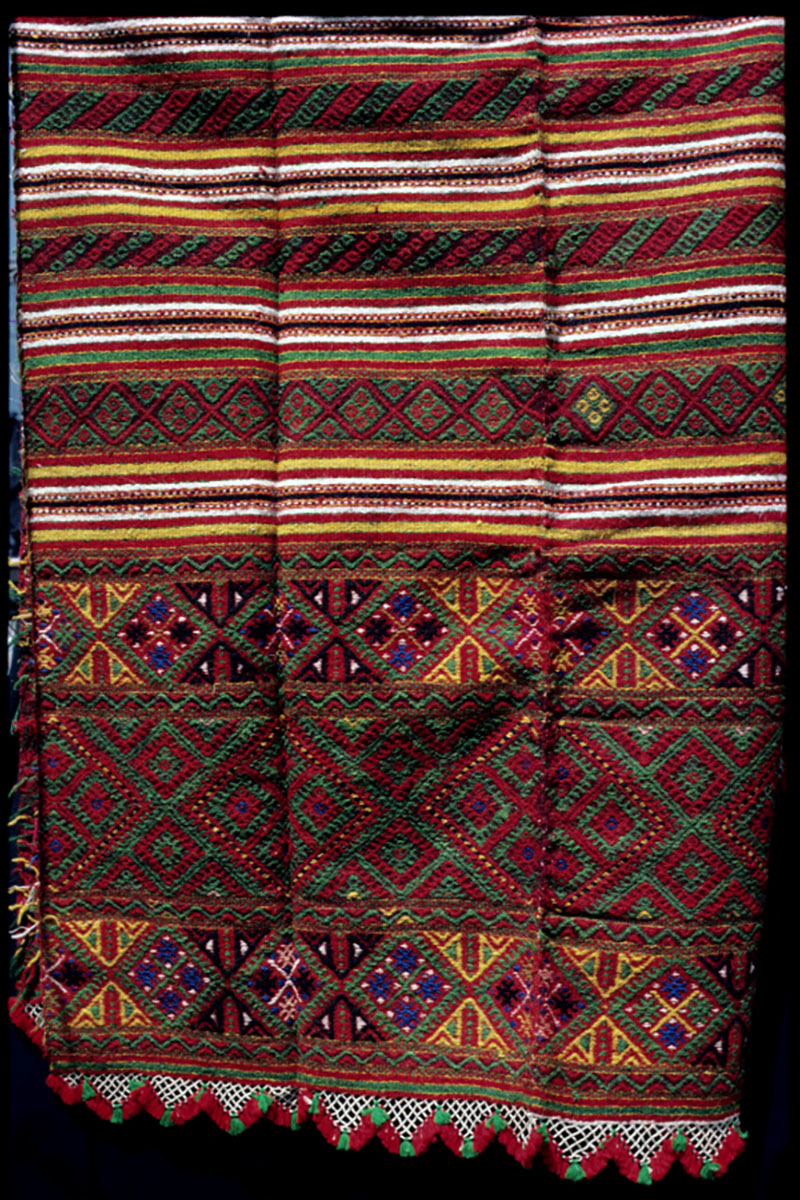
Kilimi, Lassithi 1860
The ends are adorned with bands of decorative motifs like those of soyioma fabrics, while the central section is filled with thin stripes of the same colour, alternating with narrow bands of simple geometrical motifs.
This type of woven fabric is particularly interesting for the harmonious composition of areas with different styles on the surface of the fabric.
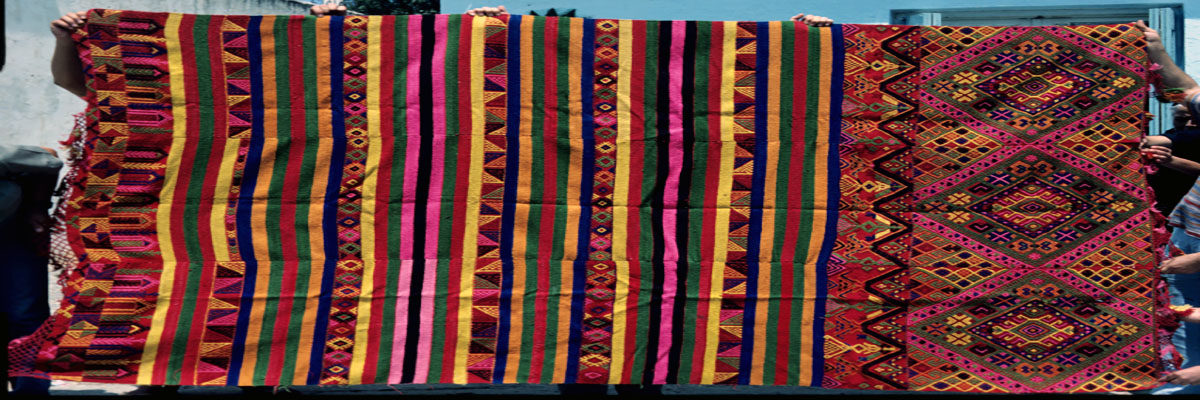
Kilimi, Monofatsi 1910
Woven fabrics with geometrical decoration and linear designs are generally used as bedspreads and found in the district of Lassithi in Lassithi Prefecture and the districts of Malevisi, Pediada, Monofatsi and Viannos in Heraklion Prefecture.
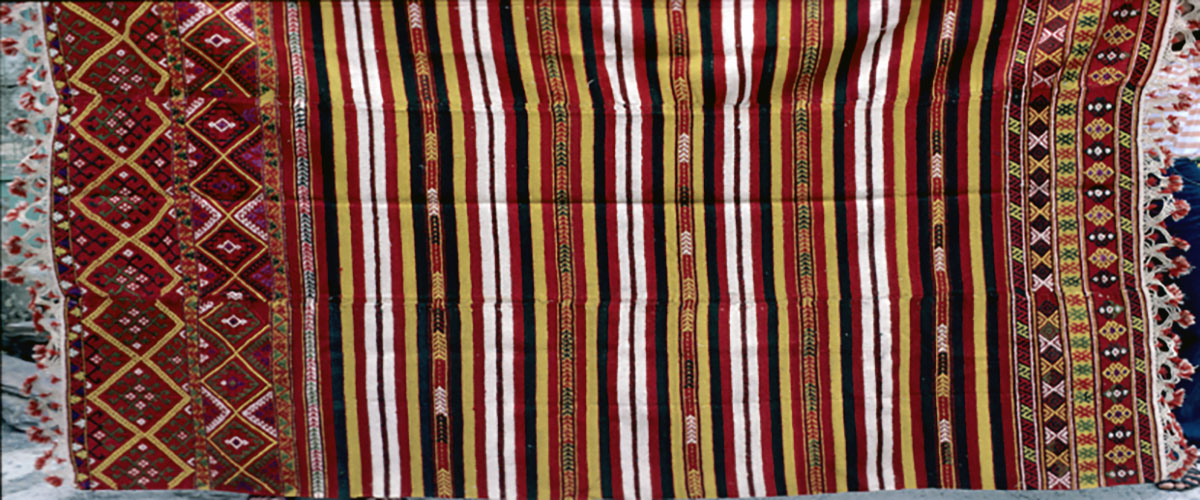
Kilimi, Monofatsi c. 1880
Woven Fabrics With Designs At Both Ends
In these fabrics, only the two ends are decorated with designs, while the rest of the surface, the “ground”, is either undecorated or, more rarely, embroidered with small scattered motifs.
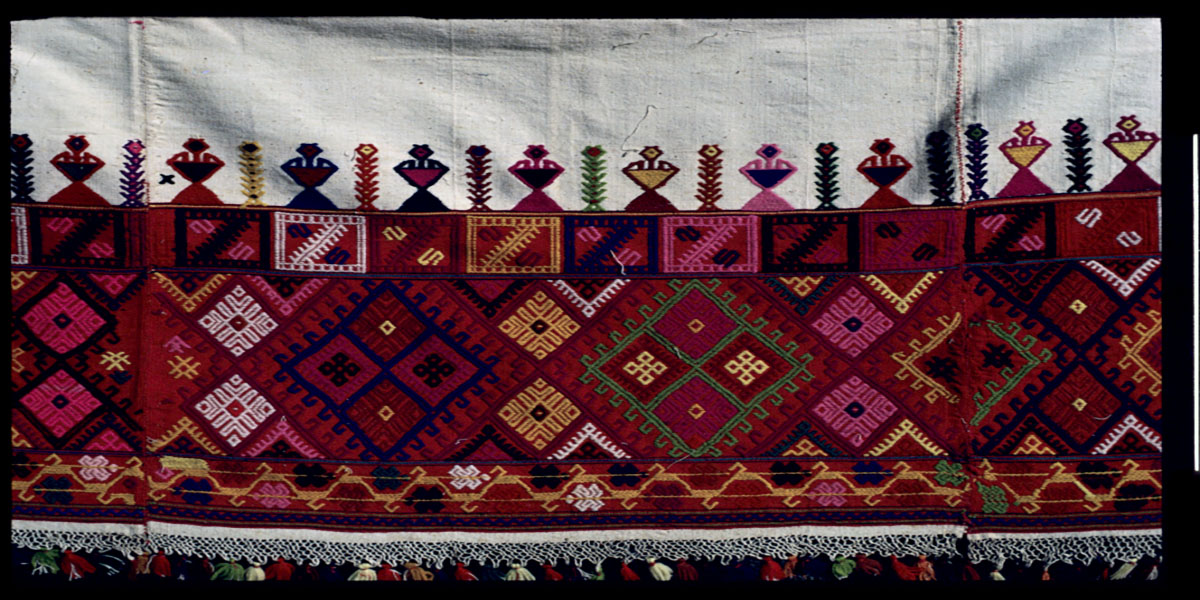
Fabrics with decorated ends are bagalia (sofa covers), kilimia (kilims), patanies and hiramia (bedspreads). They are found in Eastern and Western Crete (Lassithi and Chania Prefectures) but not in Central Crete (Heraklion and Rethymnon Prefectures).
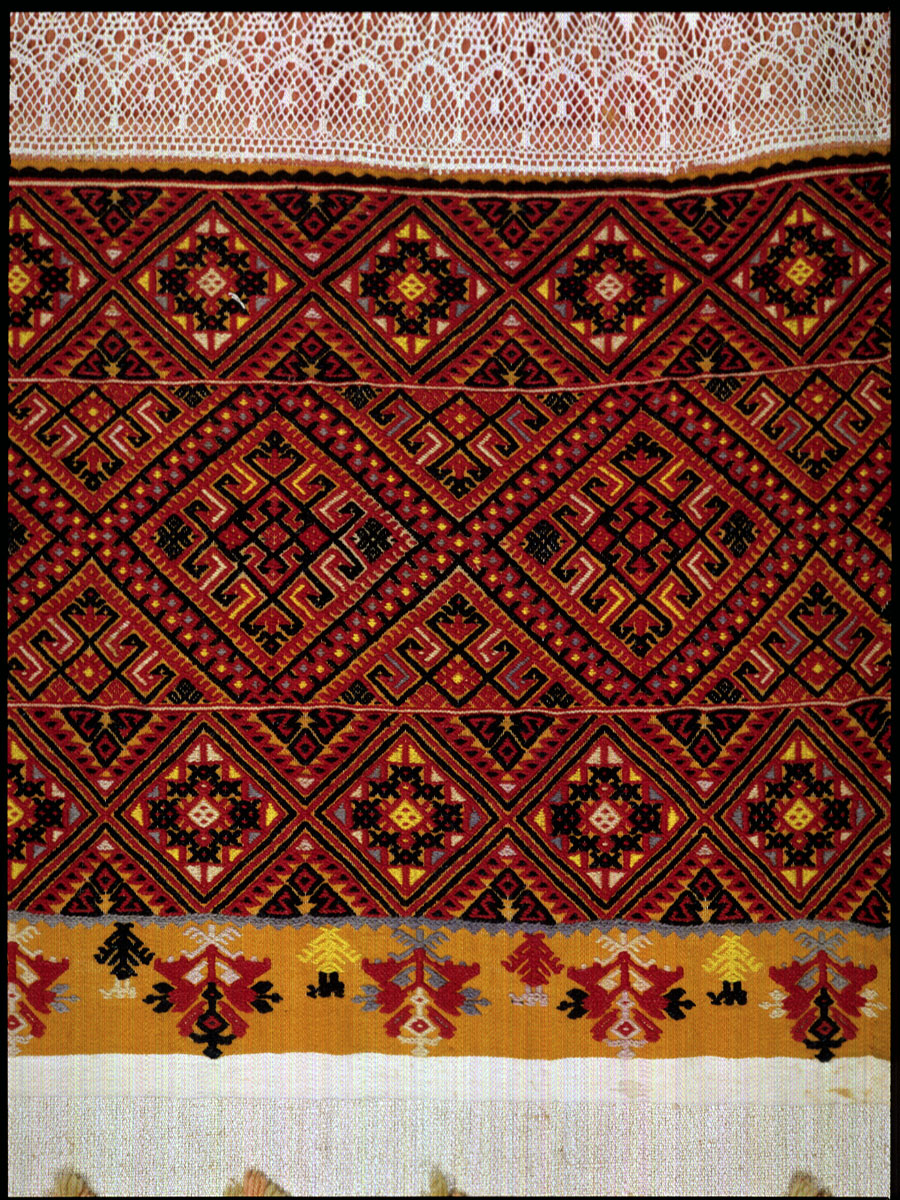
Bedspread, Merambello
The geometrical designs used to ornament the surface of these fabrics are the same as those on soyioma, apart from a band of schematic figurative motifs which defines the end of the decorated surface adjoining the “ground”.
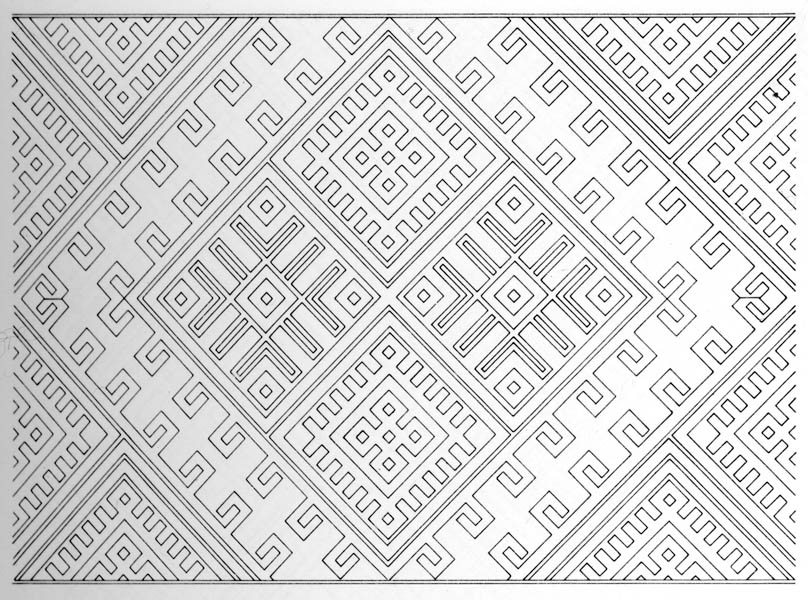
Koubelidika Kilimia Of Central Crete
Koubelidika kilims are a special type of carpet found only in Central Crete. Their name is derived from the main decorative motif, the koubes, from the Turkish word kube meaning “raised dome”.
The koubedes are a characteristic feature of these kilims, both due to their distinctiveness as a decorative motif and because they cover a large area of the surface of the fabric.
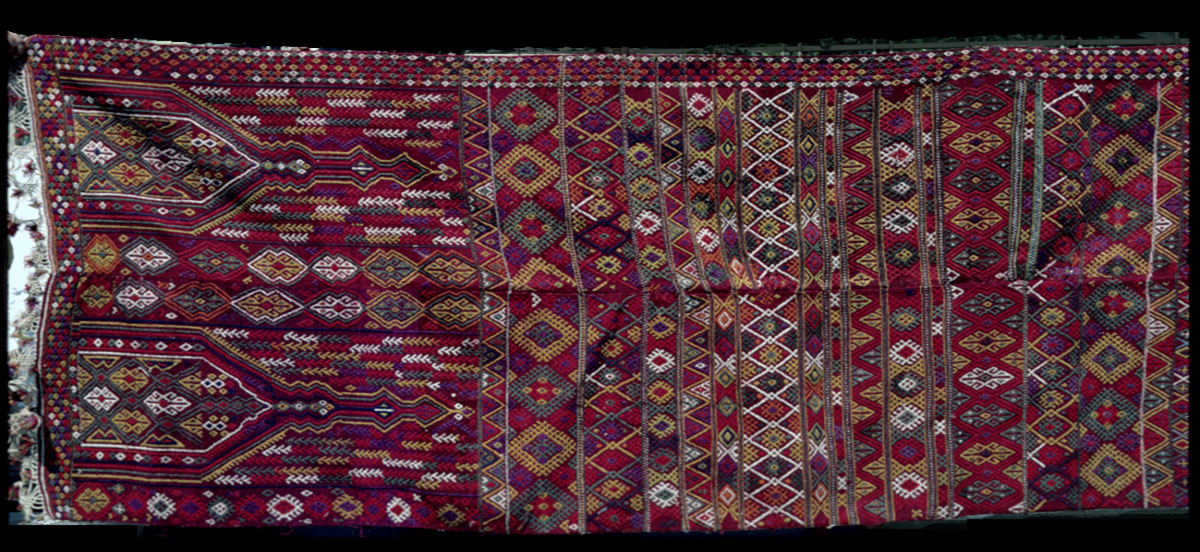
Kilimi, Monofatsi 1900
Koubelidika kilims are usually soyioma (filled). Koubelidika with stripes in the centre or decoration only on the ends are rarer.
All the koubelidika kilims we have found are relatively old. The oldest dates from 1840, while the newest is no later than 1910.
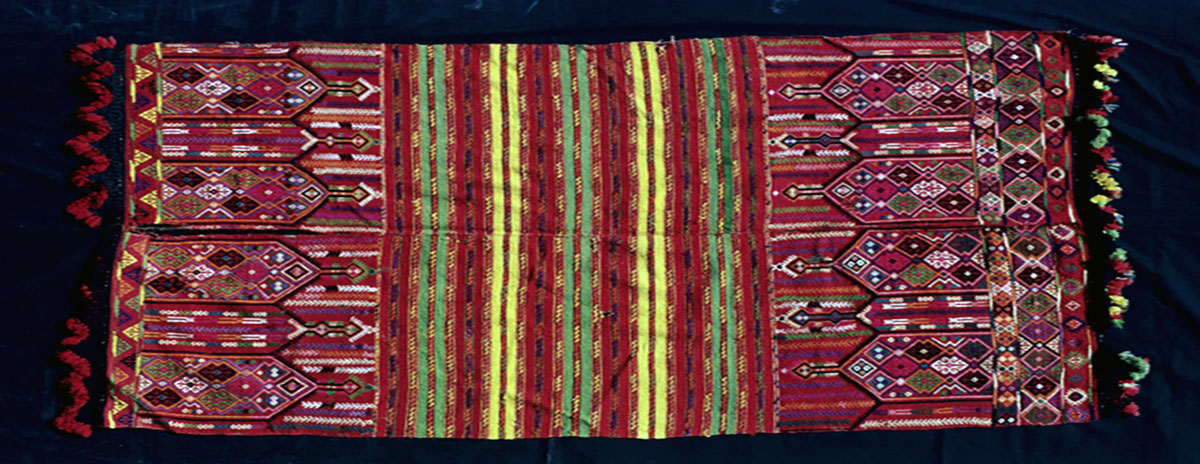
Kilimi, Mylopotamos 1900
Attempts to discover the origin of the koubes as a decorative element inevitably lead to comparison with the mihrab arch, found on Muslim prayer rugs and woven fabrics from Asia Minor, Persia etc.
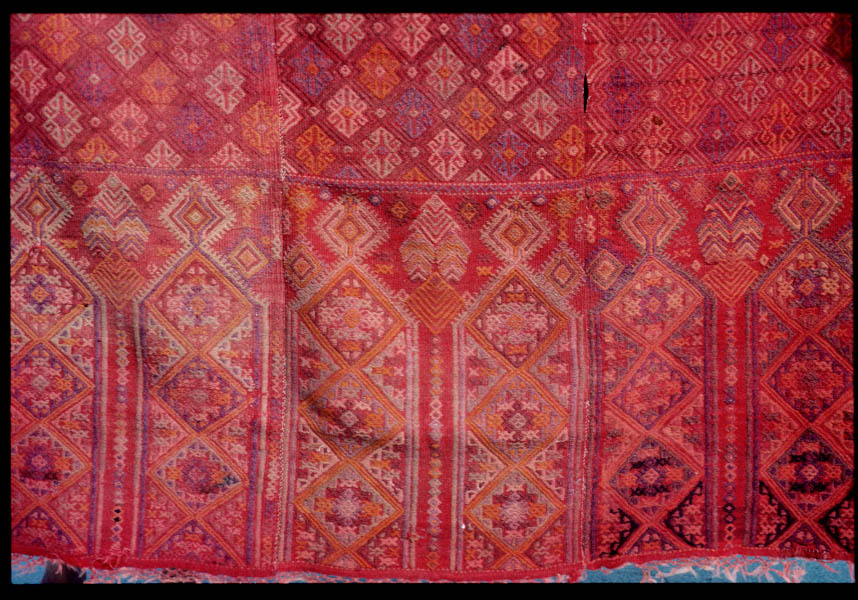
An Original Type Of Woven Fabric From Chaniaprefecture
Many large woven fabrics of Chania Prefecture are of a different style and make to other Cretan woven fabrics with geometrical patterns. While similar woven fabrics are rare in the rest of Crete, they are found in other parts of Greece such as Macedonia, Thrace, the Peloponnese and elsewhere.

GROUP 1: Monochrome bands alternate with bands decorated with simple motifs.
(Kilimi, Cydonia 1920)
These fabrics are not decorated with the usual diamond motifs, with their characteristic complexity and density of rows executed in different colours. Here the motifs are simple patterns defining large or small areas of the same colour, and which are repeated either within a band or across the whole surface of the weave.
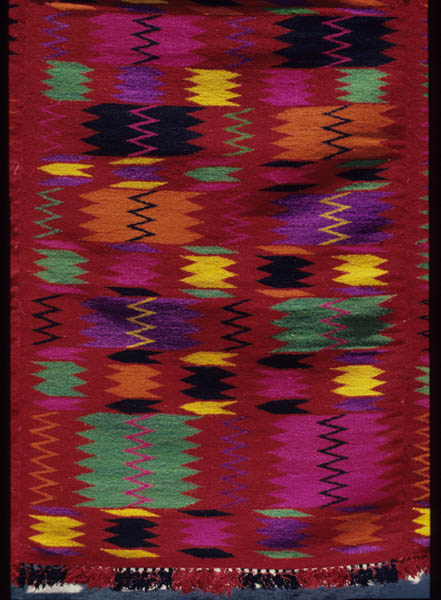
GROUP 2: The motifs with oblique lines stand out on a red ground. (Patania, Cydonia 1920)
The motifs are not “embroidered” on the fabric, i.e. they are not woven over a given ground of continuous colour and structure; the motifs themselves form the surface of the woven fabric.
Colours play a very important part in this type of woven fabric, due to their richness, brightness and intensity, and also the relatively large surface covered by each compared to other types of woven fabric.
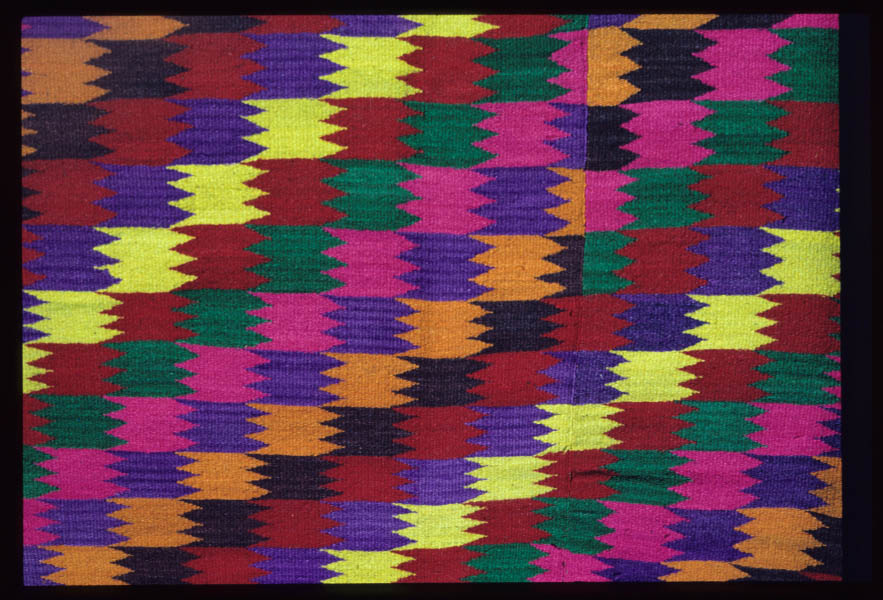
GROUP 3: The surface is covered with the same “unitary” motif; it is the colours that create the geometrical patterns. (Kilimi, Selino 1875)
All the basic colours are used (red, green, blue, orange, yellow, violet) and also pink, light blue, black and white.
In spite of their common characteristics, these woven fabrics may be divided into three groups, as we see from the photographs.
Two Kilimia Of The Amari District
In the Amari district we find two soyioma kilims with a unique surface arrangement and geometrical composition. These carpets only have two decorative bands, one at each end. The rest of the surface is covered by a honeycomb pattern of small hexagonal spaces of equal size.
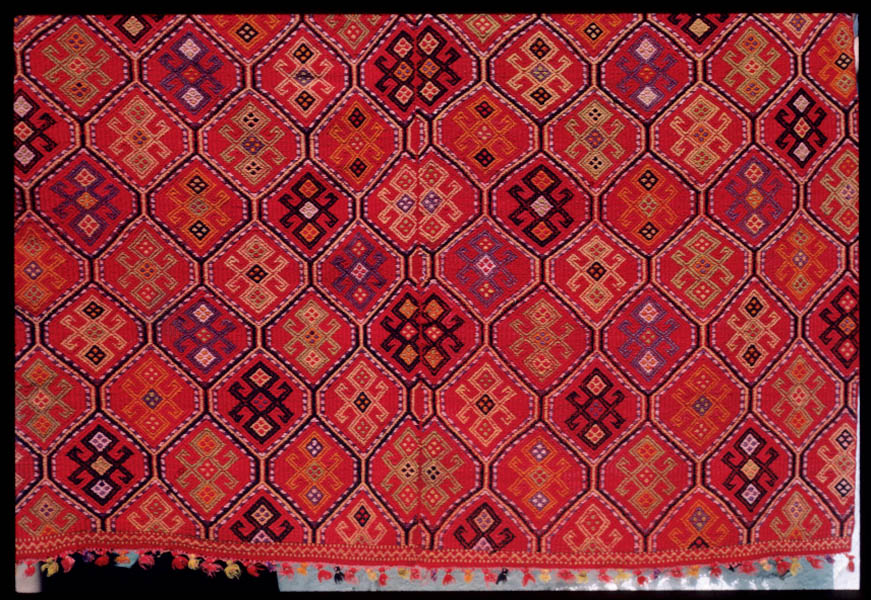
Kilimi, Amari 1900
Two motifs are repeated in the hexagons of the older kilimi and one in those of the more recent one. This arrangement gives an impression of unity and uniformity.
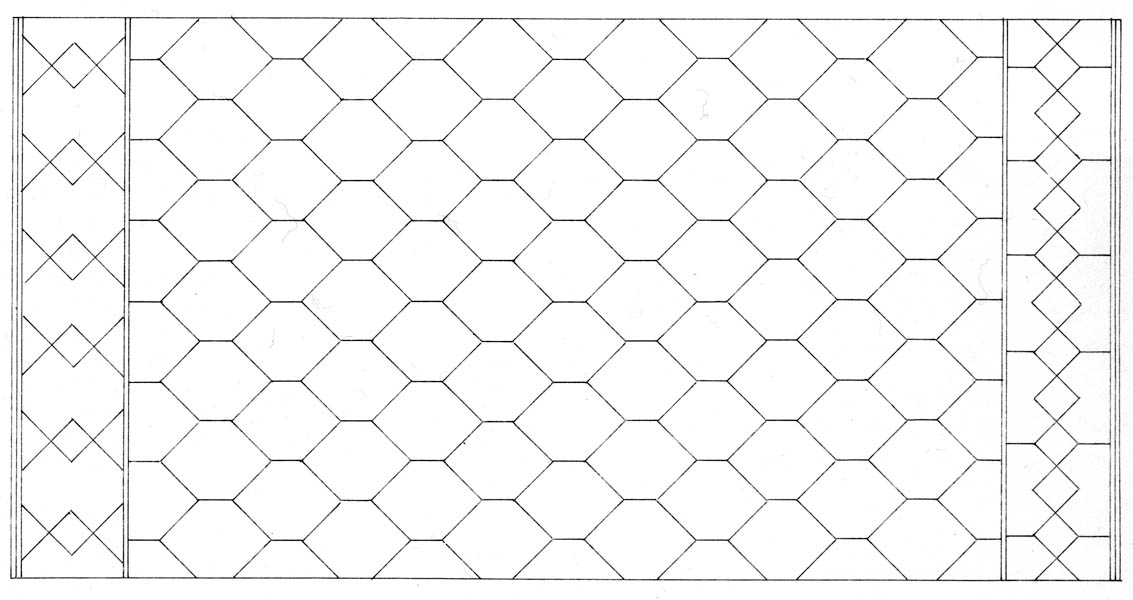
This impression is heightened by the common colour scheme, whereby the various colours and hues are placed symmetrically across the surface without defining specific zones of colour.
These kilimia from the district of Amari are strikingly similar to woven fabrics from Turkey, Persia and the Caucasus.
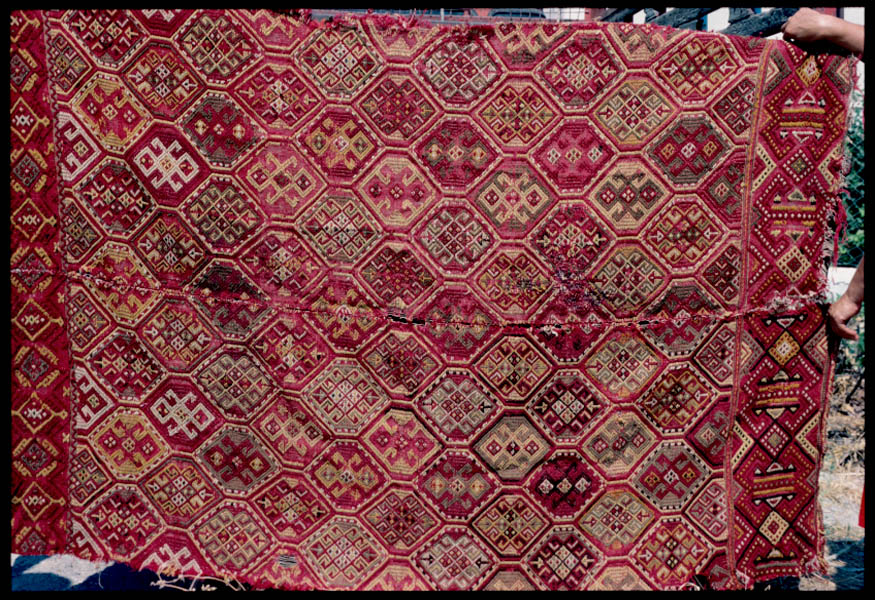
Kilimi, Amari 1830-40
